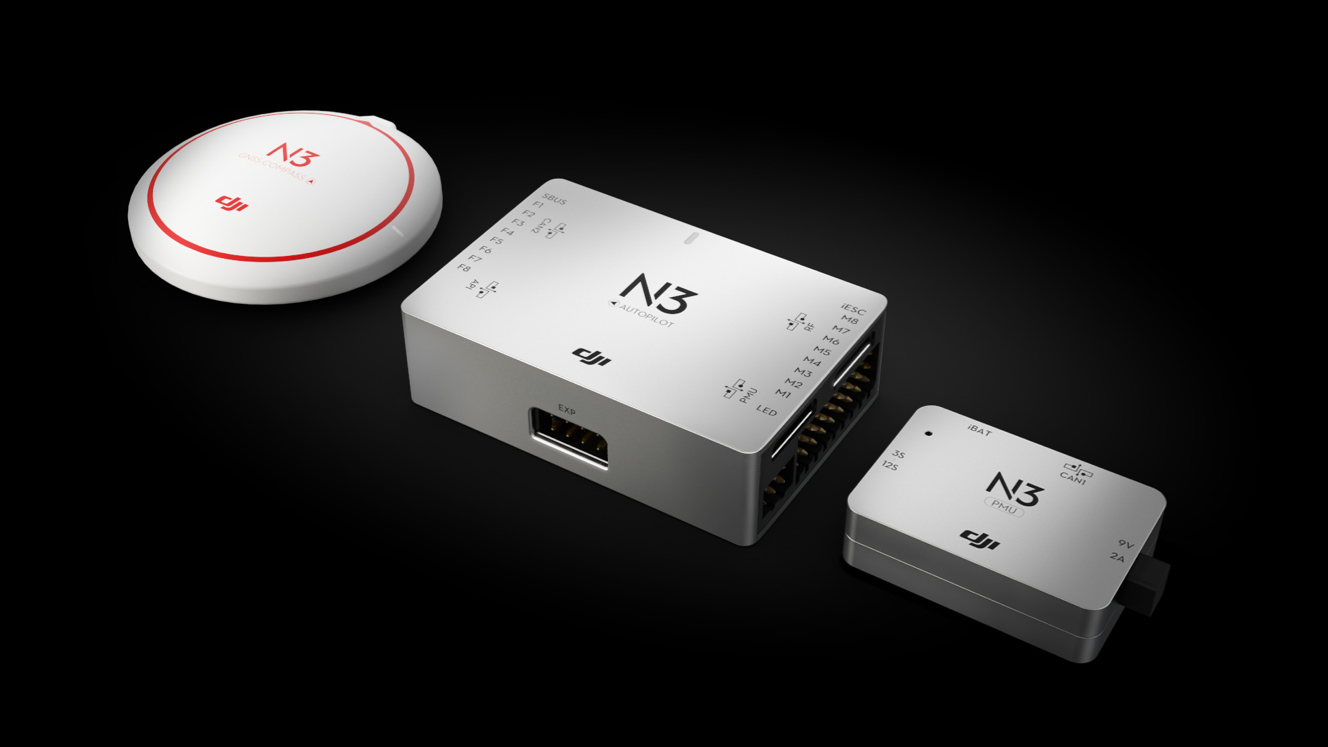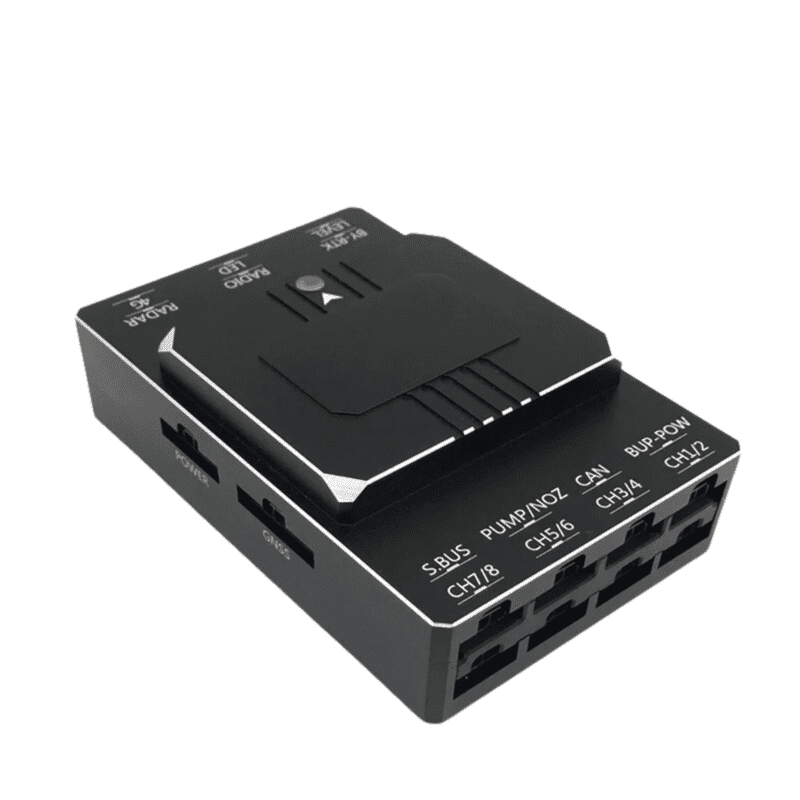Reliable Drone Navigating with SparkNavi Drone Flight Controller and GNSS/INS Made in Taiwan
Reliable Drone Navigating with SparkNavi Drone Flight Controller and GNSS/INS Made in Taiwan
Blog Article
The Relevance of Drone Trip Controllers in Modern Aerial Modern Technology: Trick Parts and Their Impact
In the realm of contemporary airborne technology, drone trip controllers serve as the pivotal systems that orchestrate a drone's efficiency and abilities. As industries significantly depend on drones for applications ranging from agriculture to security, the advancing modern technology within flight controllers increases vital concerns about their future effect and potential developments.

Overview of Drone Flight Controllers
In the world of aerial innovation, drone flight controllers act as the vital brain of unmanned aerial cars (UAVs), allowing accurate maneuverability and security throughout flight. These advanced systems incorporate sensor information, processing formulas, and control inputs, allowing drones to perform intricate trip patterns with accuracy.
Drone trip controllers make use of numerous sensors, such as gyroscopes, accelerometers, and GPS components, to assess the UAV's positioning and placement in real-time. This information is vital for maintaining balance and making certain risk-free procedure in varied environmental problems. The controllers process this information to make immediate modifications to the drone's electric motors, enabling smooth changes and receptive handling.
In addition, trip controllers are equipped with advanced software application that supports functions such as waypoint navigation, challenge evasion, and self-governing trip abilities. This software application is critical for both recreational and commercial applications, where integrity and accuracy are extremely important. As drone modern technology proceeds to advancement, the advancement of trip controllers will play a critical duty in boosting UAV safety and security, capability, and convenience, ultimately broadening their applications throughout different sectors.
Key Parts Explained
Comprehending the fundamental parts of drone trip controllers is essential for grasping exactly how these systems operate properly. At the heart of a flight controller is the microcontroller, which functions as the brain, refining information from numerous sensors and implementing commands. Vital sensing units consist of accelerometers and gyroscopes, which measure the drone's orientation and motion, offering critical responses for stablizing.
Another secret component is the measure, which evaluates elevation by measuring climatic stress, while general practitioner components use positional data, enabling independent navigating - SparkNavi drone flight controller and GNSS/INS made in taiwan. The flight controller also interfaces with Electronic Rate Controllers (ESCs), which control the rate of the drone's electric motors based on the controller's commands
Communication modules, such as radio receivers, facilitate remote input, allowing drivers to send out commands in real-time. Furthermore, some flight controllers integrate software application that can take care of complicated algorithms for waypoint navigating, trip preparation, and telemetry information evaluation.
Duty in Trip Security
Central to preserving trip security, drone flight controllers use sophisticated algorithms to process sensor data and make real-time changes. These controllers are outfitted with a variety of sensors, including barometers, accelerometers, and gyroscopes, which constantly monitor the drone's speed, altitude, and orientation. By interpreting this data, the trip controller can recognize variances from the preferred trip path and respond immediately to preserve stability.
For instance, if a drone experiences an unforeseen gust of wind, the flight controller can rapidly change the motor rates to combat the disturbance, making certain a consistent trip trajectory. This capability is vital not only for hand-operated flight operations but also for performing complicated maneuvers and preserving smooth flight in different ecological problems.
.png)
Furthermore, the innovative algorithms made use try this of in trip controllers, such as PID (Proportional-Integral-Derivative) control, permit fine-tuning of the drone's response to modifications in flight problems. By enhancing these control criteria, trip controllers can improve stability, boost responsiveness, and lower pilot workload. Inevitably, the function of trip controllers in guaranteeing trip stability is important for the risk-free and effective operation of modern drones throughout diverse applications.
Effect On Autonomous Procedures

Independent operations are specifically crucial in varied applications such as agriculture, delivery, and security services. With boosted flight controllers, drones can autonomously navigate predetermined paths, successfully collect information, and adapt to vibrant settings. This capacity reduces the requirement for consistent human oversight, consequently raising operational efficiency and safety.
Furthermore, the execution of artificial intelligence strategies within flight controllers enables drones to improve their performance gradually by finding out from previous missions. This adaptability leads the way for extra sophisticated autonomous applications, such as flock innovation, where multiple drones collaborate their activities to attain an usual purpose.
Future Trends in Flight Controllers
Developments in trip controller technology are positioned to transform drone capacities in the coming years. One considerable trend is the integration of expert system (AI) and artificial intelligence algorithms, allowing drones to gain from their environments and make real-time choices. This innovation will certainly boost independent navigation, challenge evasion, and goal preparation, dramatically enhancing operational performance and safety and security.
In addition, the development of innovative sensing unit innovations, such as LiDAR and multispectral imaging, will certainly offer trip controllers with richer data inputs. This will assist in a lot more sophisticated logical capacities, allowing drones to carry out intricate jobs, such as precision search, rescue and farming, and framework assessments with extraordinary accuracy.
Another emerging trend is the miniaturization of trip controller elements, which will certainly result in lighter and much more portable drones. This evolution will certainly prolong trip periods and payload abilities, making drones extra versatile for numerous applications.
Conclusion
Finally, drone flight controllers function as vital elements in contemporary aerial innovation, making certain stability and you could look here precision in ability to move via the integration of microcontrollers, accelerometers, and GPS components. SparkNavi drone flight controller and GNSS/INS made in taiwan. Their capability to allow self-governing procedures and adapt to numerous applications underscores their value across multiple industries. As developments in expert system and sensing unit technology remain to arise, the potential for enhanced capacities and improved functional effectiveness in drone systems will likely improve the future of aerial applications
Central to maintaining trip stability, drone flight controllers utilize sophisticated formulas to process sensing unit information and make real-time adjustments. By interpreting this information, the trip controller can determine discrepancies from the wanted flight course and react promptly to keep stability.
Furthermore, the innovative algorithms made use of in flight controllers, such as PID (Proportional-Integral-Derivative) control, allow for fine-tuning of the drone's action to changes in trip problems. Inevitably, the duty of flight controllers in ensuring trip stability is important for the risk-free and reliable operation of contemporary drones throughout varied applications.
The original site innovations in drone trip controllers not only improve trip stability however also considerably affect autonomous procedures. SparkNavi drone flight controller and GNSS/INS made in taiwan.
Report this page